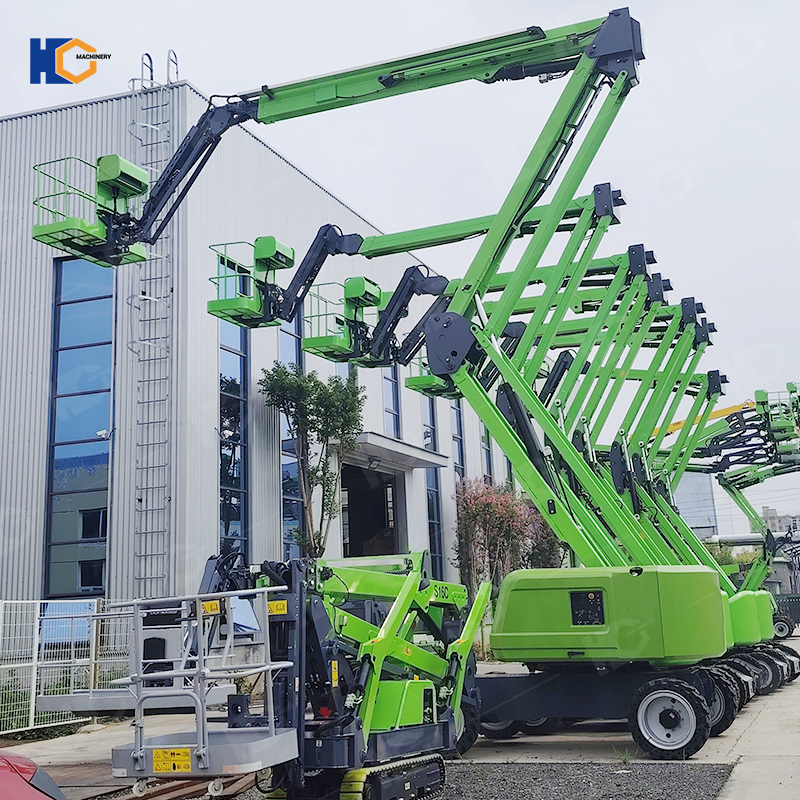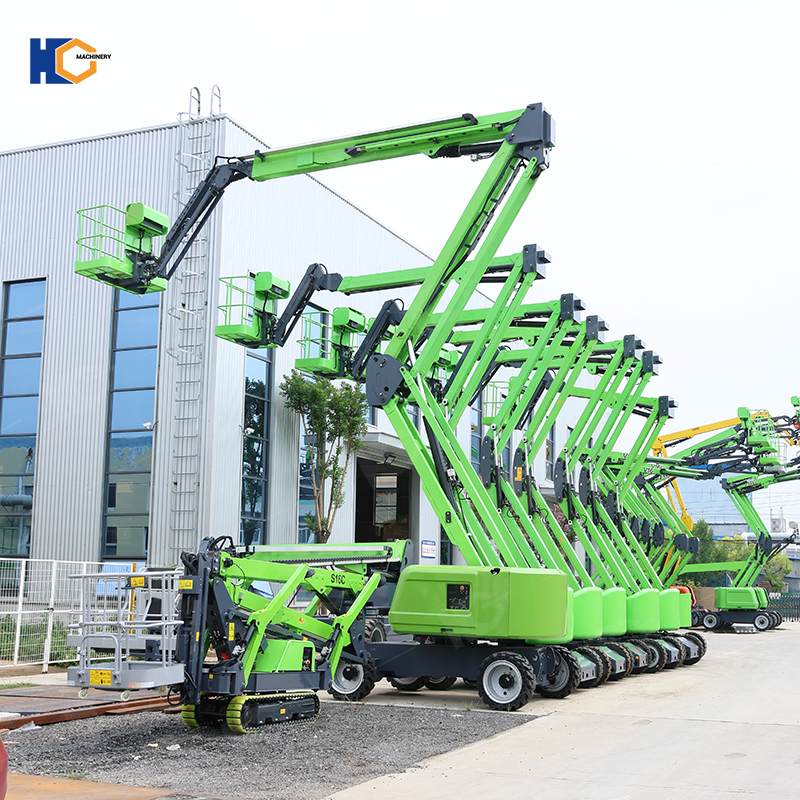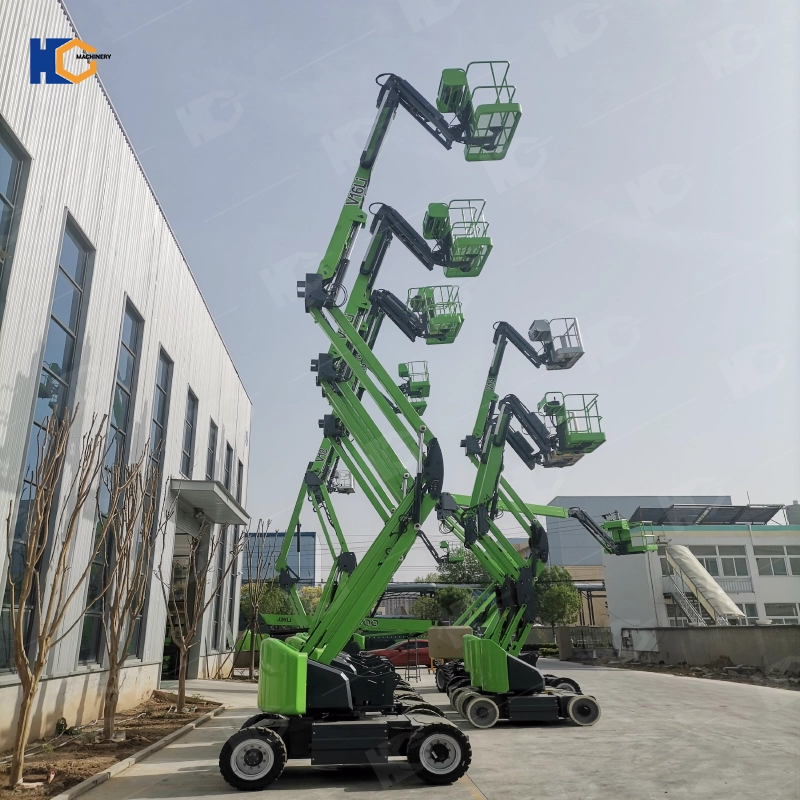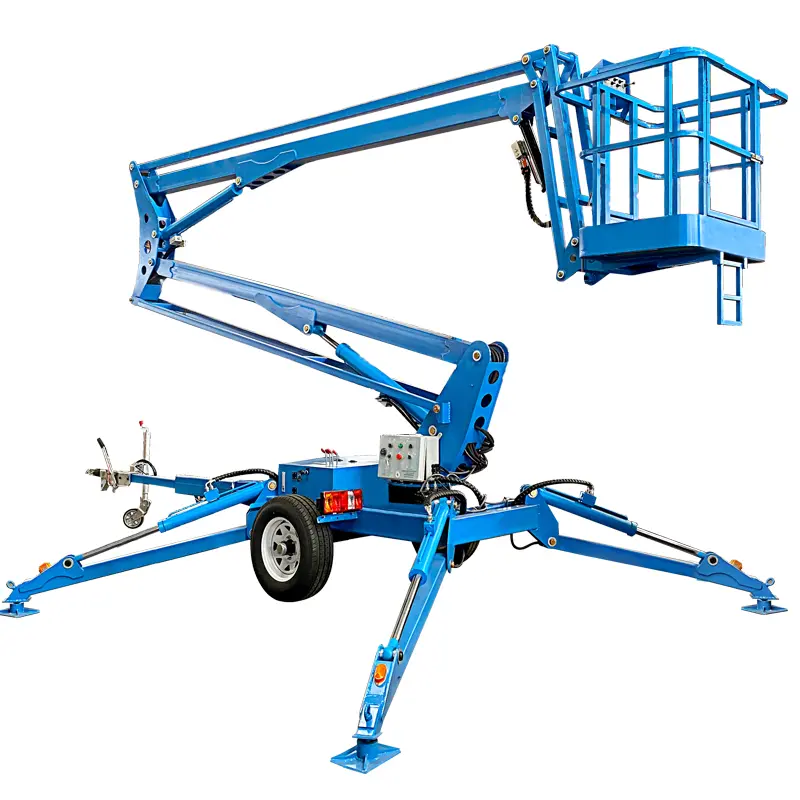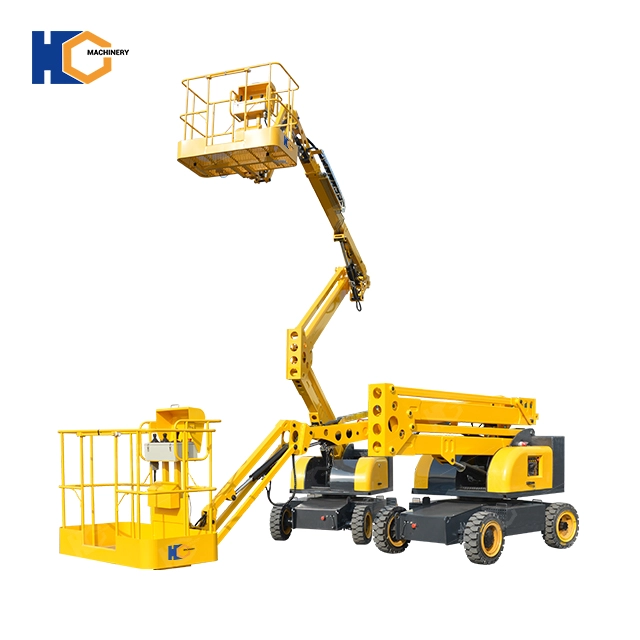1. Introduction
In the field of aerial work platforms (AWPs), Self-Propelled Boom Lifts have become indispensable for tasks that require workers to operate at height with flexibility and safety. Among all power options, Diesel Self-Propelled Boom Lifts are one of the most popular choices for construction, shipyards, ports, outdoor maintenance, and mining industries.
China, as a global manufacturing hub, is home to many Diesel Self-Propelled Boom Lift factories that export to over 100 countries worldwide. According to 2024 export data, China's aerial work platform exports exceeded USD 1.6 billion, with diesel boom lifts accounting for around 28% of total export value.
This article will explain what a self-propelled boom lift is, why diesel-powered models are preferred for certain applications, what technical details to look for, and how to choose the right supplier from China.
2. What is a Self-Propelled Boom Lift?
A Self-Propelled Boom Lift is a type of aerial work platform equipped with a hydraulic boom arm that can extend both vertically and horizontally. Unlike trailer-mounted or manual push lifts, self-propelled models have their own drive system, allowing operators to move the machine without dismounting from the platform.
Key features:
Boom structure: Articulating (knuckle boom) or telescopic boom.
Mobility: Can drive around the worksite under its own power.
Height range: Typically from 12 m (39 ft) to over 40 m (131 ft) working height.
Capacity: 200–450 kg platform load.
Control system: Joystick-based proportional control for smooth movements.
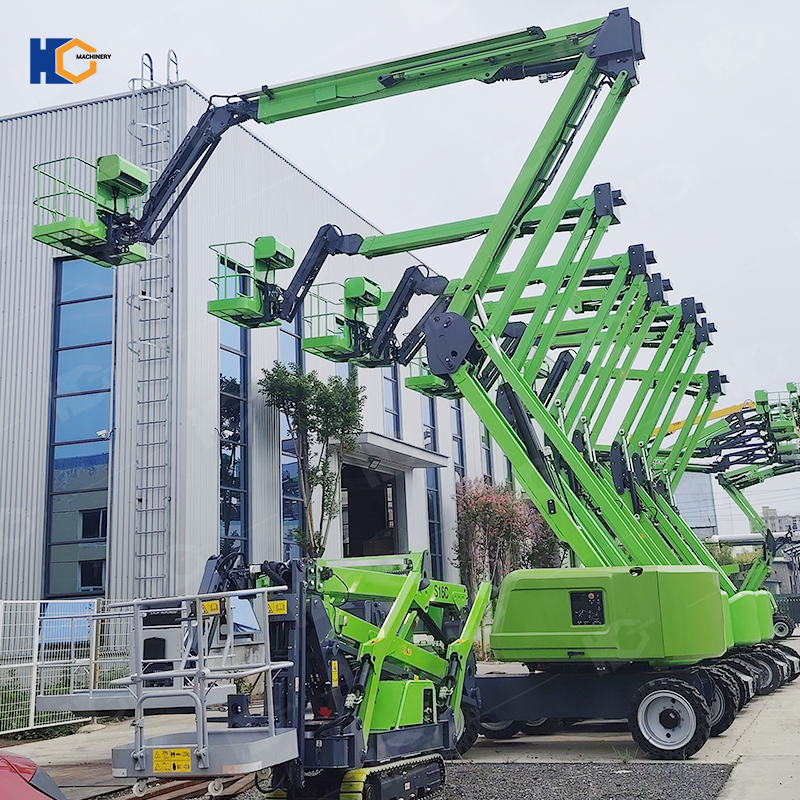
3. Diesel Self-Propelled Boom Lift: Core Advantages
Diesel-powered models are designed for heavy-duty, outdoor environments where battery power alone is insufficient. The main advantages include:
3.1 High Power Output
Diesel engines provide continuous high torque, making them suitable for rough terrain and heavy load conditions.
Capable of climbing grades up to 40%, which is essential for construction sites.
3.2 Long Operating Hours
Unlike battery-powered lifts that require charging, diesel lifts can operate for 8–12 hours continuously with a single fuel tank (40–70 L capacity).
3.3 High Lifting Capacity
Typical load capacity ranges from 230 kg to 450 kg, allowing multiple workers plus tools and materials in the platform.
3.4 All-Terrain Capability
Equipped with 4x4 drive, foam-filled rough-terrain tires, and oscillating axles for stability on uneven ground.
3.5 Weather Resistance
Works well in cold, hot, or humid climates where battery efficiency may drop.
4. Common Applications
Diesel Self-Propelled Boom Lifts are widely used in:
| Industry | Typical Use Case |
|---|---|
| Construction | High-rise facade work, steel structure installation |
| Shipbuilding | Hull welding, painting, inspection |
| Oil & Gas | Pipeline maintenance, refinery construction |
| Port Operations | Crane maintenance, lighting installation |
| Mining & Quarry | Equipment repair at height |
| Outdoor Maintenance | Bridge inspection, billboard installation |
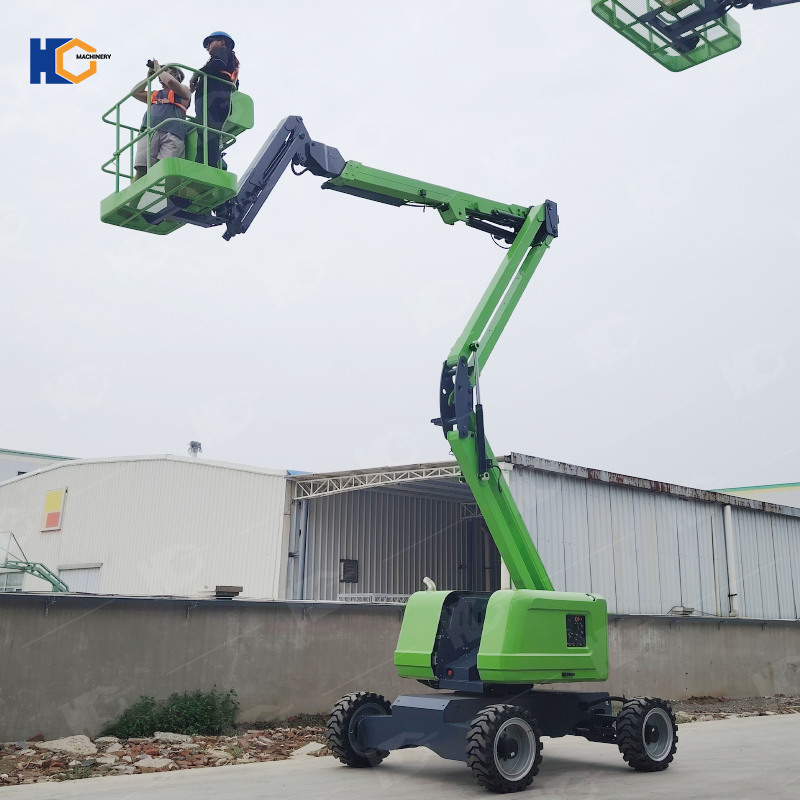
5. Technical Specifications Reference
Below is a typical specification sheet for a Diesel Self-Propelled Boom Lift from a leading Chinese manufacturer:
| Parameter | Value |
|---|---|
| Working Height | 20.0 m (65 ft) |
| Platform Height | 18.0 m (59 ft) |
| Horizontal Outreach | 12.2 m (40 ft) |
| Platform Capacity | 230 kg |
| Power Source | 48 kW Diesel Engine (Cummins or Yanmar) |
| Drive | 4x4 |
| Gradeability | 40% |
| Tire Type | Foam-filled rough-terrain |
| Weight | 10,200 kg |
| Swing | 360° continuous |
| Platform Rotation | ±90° |
| Control | Proportional joystick |
| Standards | CE, ISO9001, ANSI compliant |
6. Price Range (China Export)
China’s diesel self-propelled boom lifts are competitive in pricing compared to European or American brands, without sacrificing performance.
| Working Height | Export Price (FOB China) | Approx. CIF Price (US West Coast) |
|---|---|---|
| 14–16 m | USD 23,000–28,000 | USD 25,500–31,000 |
| 20–22 m | USD 35,000–45,000 | USD 38,000–48,500 |
| 26–28 m | USD 48,000–60,000 | USD 52,000–64,000 |
| 40 m+ | USD 75,000–110,000 | USD 82,000–118,000 |
Note: Prices vary by brand, configuration, and order quantity. OEM customization may affect the final cost.
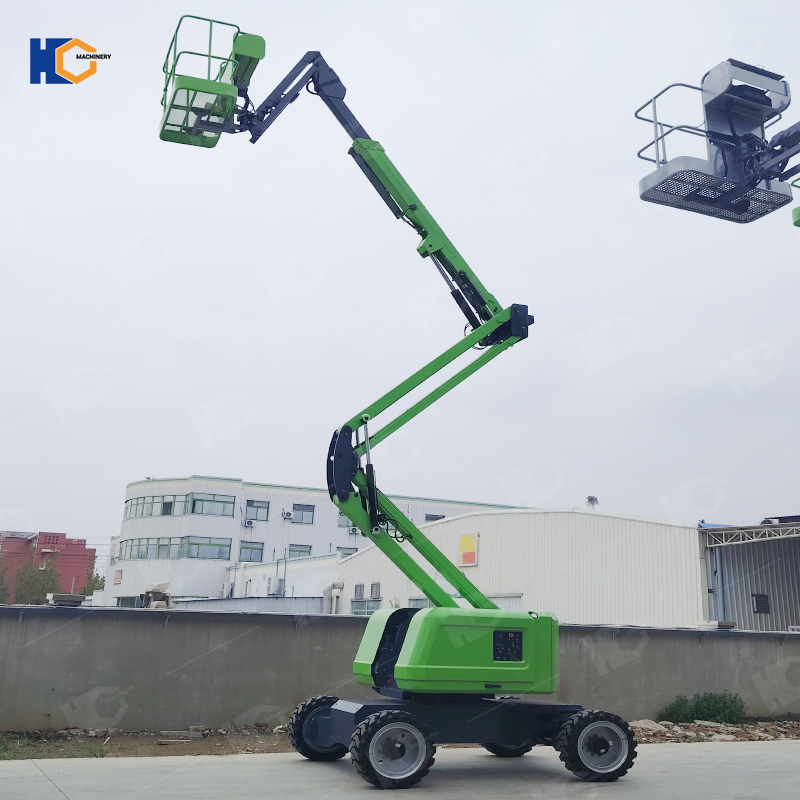
7. Why Buy from a Chinese Factory?
7.1 Cost Efficiency
Manufacturing in China benefits from economies of scale, lowering component and labor costs.
Chinese diesel boom lifts are often 30–40% cheaper than similar Western models.
7.2 Strong Export Capacity
Many Chinese factories produce ANSI/CSA/CE-certified machines, making them compliant for global markets.
7.3 Customization Options
Platform size, engine brand (Cummins, Yanmar, Perkins), control system, and paint color can be customized.
7.4 After-Sales Support
Leading suppliers provide online technical support, spare parts kits, and training videos.
8. How to Choose the Right Diesel Self-Propelled Boom Lift Factory in China
When sourcing from China, overseas buyers should focus on:
Certifications – Ensure CE (for Europe), ANSI (for North America), or other regional compliance.
Production Capacity – A factory with an annual output of 500+ units is more likely to have stable quality.
Engine Options – Verify engine brand availability and maintenance service in your country.
Test Reports – Request load tests, stability tests, and quality inspection reports.
Spare Parts Supply – Ensure the supplier can provide parts within 7–14 days for international customers.
Warranty Terms – Standard should be at least 12 months or 1,000 working hours.
9. 2024 Export Trends and Data
Top Export Destinations: Southeast Asia, Middle East, South America, and Africa.
Export Growth: China’s diesel boom lift exports grew 12% year-on-year in 2024.
Most Popular Models: 20–26 m working height, 4x4 drive, 230–300 kg load capacity.
Customization Demand: Over 40% of overseas orders request OEM branding.
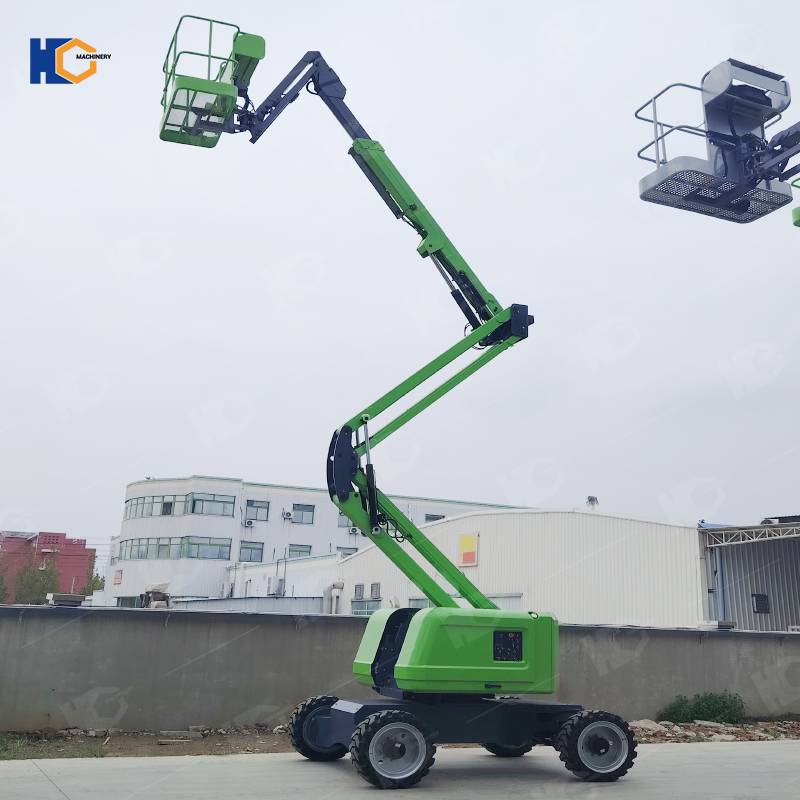
10. Safety and Maintenance Tips
Safety:
Always train operators according to ISO 18878 standard.
Check ground stability before extending the boom.
Use safety harnesses when working at height.
Maintenance:
Change hydraulic oil every 1,000 hours or annually.
Inspect tires, engine filters, and boom joints weekly.
Keep engine fuel system clean to avoid power loss.
11. Conclusion
A Diesel Self-Propelled Boom Lift is a robust, long-lasting investment for outdoor, heavy-duty aerial work. China’s factories offer competitive pricing, reliable performance, and global-standard certifications, making them an attractive sourcing option for contractors, rental companies, and industrial users worldwide.
By understanding the specifications, pricing trends, and supplier selection criteria, buyers can make informed decisions that ensure both cost savings and operational efficiency.
12. Huichuang Lift
Huichuang Lift is a professional Diesel Self-Propelled Boom Lift manufacturer in China with strong R&D, production, and export capabilities. Established over a decade ago, the company focuses on designing and producing high-quality aerial work platforms that meet CE, ISO9001, and ANSI standards.
Its diesel self-propelled boom lifts feature working heights from 14m to 40m, 4x4 rough-terrain drive, gradeability up to 40%, and platform capacities between 230–450 kg. Equipped with reliable Cummins, Yanmar, or Perkins diesel engines, the machines deliver powerful performance for construction, shipbuilding, ports, and outdoor maintenance.
Huichuang Lift’s factory covers over 30,000 m², with modern welding, painting, and assembly lines capable of producing 500+ units annually. Products are exported to more than 40 countries, including Southeast Asia, the Middle East, Europe, and South America. The company offers OEM customization, fast spare parts supply, and professional technical support, making it a trusted partner for global contractors and rental companies seeking durable and cost-effective diesel boom lifts.
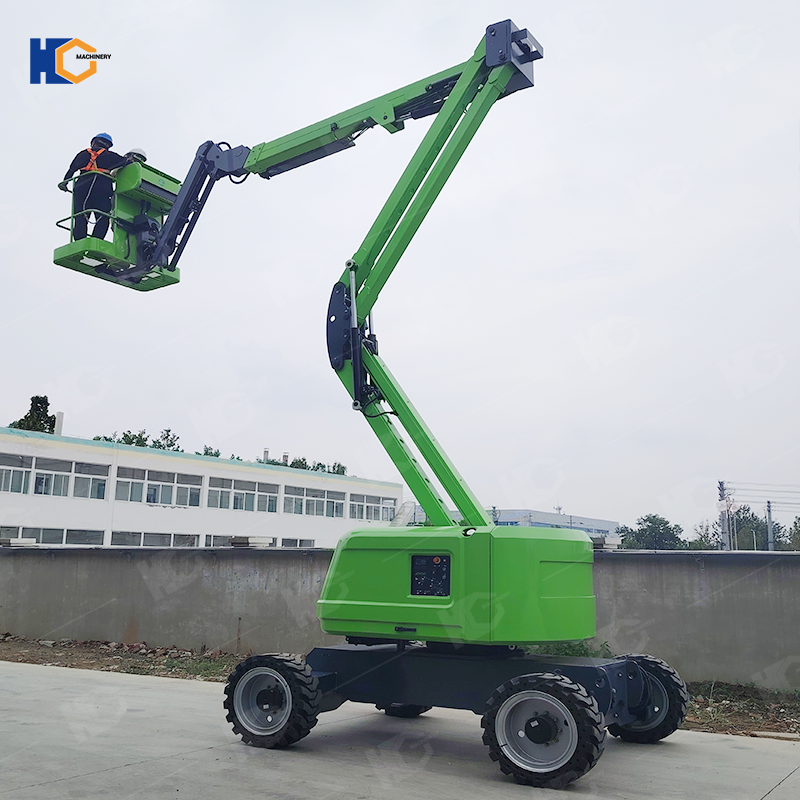
13.FAQ
1. What is the typical working height range for Diesel Self-Propelled Boom Lifts from Chinese factories?
Most models cover 14–40 meters working height. Popular export sizes are 20–26 m.
2. What certifications should I look for when importing from China?
Key certifications include CE (Europe), ANSI (North America), and ISO9001. These ensure compliance with international safety standards.
3. Which diesel engine brands are available?
Common options are Cummins, Yanmar, and Perkins. Buyers can request specific brands depending on local service availability.
4. What is the average price range FOB China?
From USD 23,000 for 14–16 m models to USD 110,000 for 40 m+ models, depending on configuration.
5. Can I request OEM branding?
Yes. Most factories offer OEM/ODM services, including custom colors, logos, and control panel language.
6. What is the production lead time?
Typically 25–45 days after deposit payment, depending on order quantity.
7. How is the warranty policy?
Standard warranty is 12 months or 1,000 working hours. Some suppliers offer extended coverage for an extra fee.
8. Are spare parts easy to get?
Leading factories maintain a spare parts stock and can ship within 7–14 days internationally.
9. What payment terms are common?
Usually 30% T/T deposit, balance before shipment. L/C is also possible for large orders.
10. Can I inspect the machine before shipment?
Yes. Buyers can arrange third-party inspection or request factory test videos before delivery.
